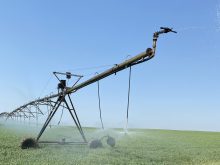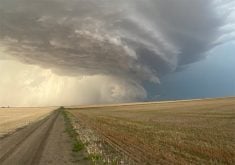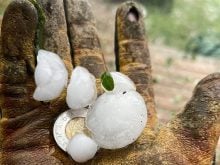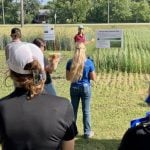YORKTON, Sask. – Good looks in the sales ring are nice, but feedlot owner Perry Kirkham wishes statistics were the basis of the cattle industry.
“I’m not a big believer in gauging the quality of cattle visually,” he said, looking over four calves in a pen beside him.
The Saltcoats, Sask., farmer and feedlot owner told a cattle production seminar here that most cattle are sold to feedlots on the basis of what a buyer sees in a minute or two in a sales ring.
Read Also

Rented farmland jumps 3.4 million acres in Saskatchewan and Alberta
Farmland rented or leased in the two provinces went from 25.7 million acres in 2011 to 29.1 million in 2021, says Census of Agriculture data.
“But at our feedlot we have this dangerous machine. It’s called a scale and we weigh a lot of cattle. It tells us the visual system of judging cattle quality isn’t necessarily working out.”
He waved at the calves beside him.
“Can anyone look at these calves – which are hardly halfway through their lives – and say they’ll be what the packing companies want and will get there with good feed conversion and good average daily gain?
“Unless we know the genetic background of these cattle, I don’t think we can do that.”
If a cow-calf producer could provide statistical information on how well the previous year’s crop performed in terms of daily gain and feed conversion, it would be a great marketing tool, he said.
However, it’s difficult to compile that information because farmers rarely are able to follow their cattle’s progress once they are sold.
But there are other things a calf producer can do to meet feeders’ needs and get better returns, he said.
Calves should be dehorned and castrated before heading to the auction mart.
If calves aren’t castrated or the procedure isn’t done properly, the animals get more male hormone, increasing the likelihood of their meat being dark purple instead of bright red, something packers reject because of bad consumer reaction.
Dark cutters unwanted
“So we just don’t want them. They’re most likely going to be dark cutters. They’ll be the ones that ride your steers and then your steers could wind up dark cutting,” he said.
Feedlots also discount for signs of frozen ears and tails, which are warning signs the animal might carry pneumonia, he said.
Also, an animal that has had frozen feet probably won’t be able to handle the high grain ration and will founder.
Producers should also try to provide feedlots with uniform-sized cattle (within 50-75 pounds of each other) with similar genetics that will grow at equal rates eating the same ration.
“The closer cow-calf producers can come to providing that uniform package, the more you will be rewarded,” he said.
Setting up pens to accommodate a range of calf sizes isn’t practical and pulling slow or fast gainers out of a pen is also a problem, he said.
“Every time we sort cattle it takes them time to get back on feed because of the disturbance.”














